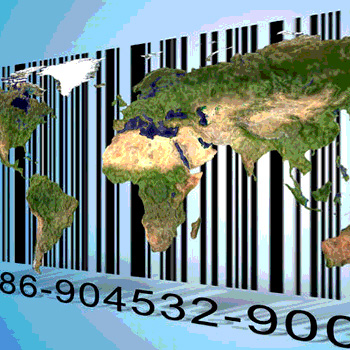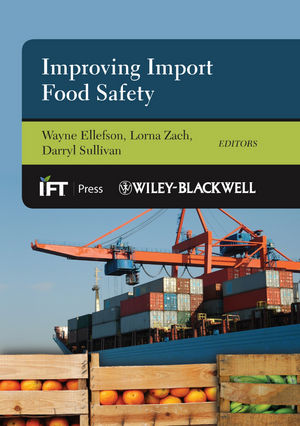Compliance with EU Food Regulations: What If Traceability and Food Recall Are Not Enough?

Glass shards, unlabelled allergens, inedible inks, Escherichia coli outbreaks, bone fragments in beef products, food contaminated by inattentive or poorly trained employees…the list may go on indefinitely, but the result will always be the same: the high regulatory pressure on the food operator and its business. The latter indeed ends up facing several “counterparts” at the same time, namely clients, control authorities, media and consumers. Consequently, the continuity of the business may be jeopardized by a significant and serious regulatory action from the public authority such as seizures, product recall and destruction, civil fines and even the possibility of criminal charges.
This contribution focuses on the extent to which the EU regulatory framework on food may hamper the ongoing operations of food manufacturers once a crisis erupts. Taking into consideration recent developments of European food policy and case history, this paper discusses how integration of legal, regulatory and technical expertise may improve the efficacy of a food manufacturer’s “crisis management plan.”
EU Food Market: A Regulatory Overview
Since its very beginning, European action in the domain of food trade moved towards the phasing in of safety obligations, as well as more integration, mutual cooperation and assistance between public authorities. Although still permeated with marked considerations, early European Commission (EC) directives on product safety already show increasing care about health. This is evident if only one pays attention to the 1992 directive on general product safety which states that “safe product shall mean any product which…does not present any risk or only the minimum risks compatible with the product’s use, considered as acceptable and consistent with a high level of protection for the safety and health of persons” (Directive 92/59/EEC now replaced by Directive 2001/95/EC). However, the veritable breakthrough occurs with the Maastricht Treaty, whose Article 129 gives the EC a degree of legal competence in the area of public health protection for the first time. The overarching aim is that products placed on the EU market must be safe.
As of today, European food safety has a well-planned strategy integrating both community and individual national requirements. Furthermore, the Rapid Alert System for Food and Feed (RASFF) and the intensive training program, managed by the Commission Services, are two further successful instruments of the EU food law regulation EC No 178/02, hereinafter called the General Food Law (GFL), that gave rise to a number of innovations.
First, the GFL addresses general principles of food law, namely risk analysis, precautionary principle, protection of consumers’ interests and principles of transparency. In more detail, risk analysis is the grundnorm on which the EU food law is based. This is the main tool upon which the regulation relies in seeking to achieve its primary two-fold objectives: a high protection of human health and free movement of foodstuffs. The concept of risk analysis splits the process into three subparts: risk assessment, risk management and risk communication.
For instance, the market approval of a novel food requires the product is evaluated as safe; a labeling or marketing health claim needs to be scientifically substantiated in order to be use on the EU marketThe use of an additive or a flavoring in a food usually requires technological justification as well as a science-based scrutiny of all relevant scientific data. In other terms, the EU decision-making process concerning foodstuffs always includes a risk assessment phase upon which the scientific and technical experts (risk assessors) and legislators (risk managers) make a decision, with regard to other legitimate factors, if appropriate. While risk assessment aims at gathering independent scientific information from many sources to justify a use and use level, risk management is based on utilizing that risk assessment information to arrive at legislative requirements, both by the EU institutions and member states’ to develop EU legislation. Finally, risk communication takes the risk assessment and risk management information and consolidates it into messaging, which targets the various EU institutions and member states, as well as general outreach to consumers, and is carried out by the Commission.
Second, the establishment of a general framework on risk assessment and risk management was accompanied by the establishment of an independent authority dealing with risk assessment, that is, the European Food Safety Authority (EFSA). The outcome of this effort was the establishment of new and wide-ranging obligations for food business operators (safety requirements, traceability and crisis management tools, product presentation, etc.).
A general outline on food control within the single market was introduced, which also took into consideration the import and export of food. Such a brand new set of rules must be integrated with a number of sectoral legislations that lay down—among others—prescriptions for specific products (novel foods, baby foods, dietary supplements, products of animal origin, etc.) or aspects (such as food hygiene, chemical safety requirements, etc.), specific product safety and quality requirements and presentation rules (e.g., labeling and advertising).
The GFL also strengthened the functioning of the RASFF, a network of EU member states, the EC, EFSA and other partners, providing a tool for quick exchange of information whenever a risk to food or feed safety is identified. When a RASFF member has any information about a serious health risk from food or feed, it must immediately inform the EC using the RASFF system, which then immediately notifies the other members in order to take the appropriate actions. This can include withdrawing or recalling a product from the market to protect consumers’ health. All incoming information is assessed by the EC and forwarded to all RASFF members using one of the four types of notifications:
• Alert notifications are sent when food or feed presenting a serious risk are available on the market and when rapid action is required.
• Information notifications are used in the same situations, but when the other members do not have to take rapid action because the product is not on the market or the risk is not considered to be serious.
• Border rejections concern food and feed consignments that have been tested and rejected at the external borders of the EU when a health risk has been detected.
• Any information related to the safety of food and feed products that has not been communicated as an alert or an information notification, but which is judged valuable for the control authorities, is transmitted to the members under the heading “News.”
In operational terms, it means that what happens in Sweden may be immediately be known in Italy: Any lack of safety, any “food crisis,” may be rapidly communicated throughout Europe. Indeed, the RASFF’s members must take action depending on the type of notification and immediately inform the Commission of the measures taken. They may, for example, withdraw or recall the product from the market. In addition, border rejections are transmitted to all border posts—that is, all 27 EU member states, as well as EU “cooperators:” Iceland, Liechtenstein, Norway and Switzerland. This is to ensure that the rejected product does not re-enter the EU through another border post.
Traceability and Product Withdrawal: Mandatory Requirements versus (Higher) Voluntary Standards
Main safety obligations under EU food law include both traceability and the obligation of market withdrawal as soon as food placed on the market is determined or confirmed to be unsafe. It is widely known that voluntary norms give substance to such obligations in much more stringent terms.
The actual rational of traceability is to allow the targeted and timely market withdrawal of the suspect product. From the competent authority’s point of view, the rationale is to enable competent safety authorities to obtain, in a short time, information on affected product and/or suspected cause.
The law defines “traceability” as the ability to trace and follow a food, feed, food-producing animal or substance intended to be, or expected to be incorporated into a food or feed, through all stages of production, processing and distribution. The GFL does not mention food contact materials, but there is no doubt that these materials are included in what is required to be traced. In more detail, Article 18 GFL only requires food (or feed) business operators (FBOs) “to identify any person from whom they have been supplied with a food, a feed, a food-producing animal, or any substance intended to be, or expected to be, incorporated into a food or feed.” Secondly, FBOs are “requested to identify the other businesses to which their products have been supplied.” To this end, systems and procedures must be written and put in place. In addition to the general requirements, sector-specific legislation applies to certain categories of food products (fruit and vegetables, beef, fish, honey, olive oil) so that consumers can identify their origin and authenticity. There are also special traceability rules for genetically modified organisms (GMOs), which ensure that the GM content of a product can be traced and requires accurate labeling so that consumers can make an informed choice. In the case of animals, producers must now “tag” every animal with details of their origin and, when animals are taken for slaughter, stamping them with the traceability code of the abattoir (slaughtering facility). The tools used (ear tags, passports, bar codes) may vary from one country to another but must guarantee the same quantity and quality of information. It is fairly obvious that Article 18 does not require the so called “internal product traceability,” which is related to flows that are internal to processing practices. Nor does the GFL pinpoint which information is necessary, nor the temporal deadline by which the FBO must be able to identify or supply the information requested by the control authority.
On the contrary, voluntary norms found in the Global Food Safety Initiatives recognized that third-party certification schemes also require internal management. It is indeed clear that by tracing only entry and exit, overall traceability will be limited, as the in-between information will not be traced. Therefore, in case of necessity, the FBO will not know precisely where the source of risk resides and as a result will be forced to larger withdrawals. These schemes also require a specific timeframe for the tracing of a batch or lot of the food and periodical testing of traceability system.
Food crises in the past have revealed that documentary records or a basic consistency with mandatory general legal requirements are not always sufficient to allow full traceability of suspect foods. It is no coincidence that further (legal) requirements have been laid down with regard to foods of animal origin by successive regulation.
Food Recall According to EU Law
The regulation of food recalls is enshrined in Article 19 GFL (“Withdrawal, Recall and Notification”). In the EU market, food withdrawal is mandatory as “a food business operator considers or has reason to believe that a food, which it has imported, produced, processed, manufactured or distributed is not in compliance with the food safety requirements” [Article 19(1) GFL]. Grounds for mandatory recall include three main elements:
• Lack of compliance with food safety requirements
• The FBO’s knowledge or reason to believe that lack compliance exists
• Food not under the immediate control of the FBO
If the above conditions exist, then the FBO must immediately initiate procedures to withdraw the food in question from the market and inform the competent authorities. Moreover, if the product may have reached the consumer, the FBO is under obligation to “effectively and accurately inform the consumers of the reason for its withdrawal “and “if necessary, recall from consumers products already supplied to them when other measures are not sufficient to achieve a high level of health protection.” [Article 19(1) GFL].
The wording of Article 19 GFL casts some doubts as regards the meaning of “food safety requirements.” On this point, some authors take the stance that Article 19 is conceived to referring specifically to Article 14 GFL, which bears the heading “Food safety requirements,” whereas others refers to all legal requirements regarding food safety.
Also under dispute is the matter of what exactly is mandatory under Article 19: The first paragraph only provides for the obligation to “initiate procedure of withdrawal,” which may be quite different from the obligation to carry out the whole withdrawal; the GFL does not contain a legal definition of withdrawal. However, definitions of withdrawal and recall are provided by Directive 2001/95/EC, according to which “withdrawal” means “any measure aimed at preventing the distribution, display and offer of a product dangerous to the consumer”(Article 2, letter h), which takes for granted that the products concerned are not under the consumer’s control/possession. The same directive establishes that “recall” means “any measure aimed at achieving the return of a dangerous product that has already been supplied or made available to consumers by the producer or distributor” (Article 2, letter g).
The setting of the scope of the above-mentioned definitions plays a role in a number of situations in which the lack of compliance with some mandatory requirements may not or does not result in the food being harmful to health, for instance, in cases of contamination above maximum residue limits. Additional requirements apply where food is in breach of food safety requirements is injurious to human health. More specifically, Article 19(3) GFL establishes that where there is evidence or “reason to believe” that food placed on the market is injurious to human health, the FBO must (1) immediately inform the competent authorities the action taken to prevent risks to the final consumer and (2) not prevent or discourage any person from cooperating, in accordance with national law and legal practice, with the competent authorities, where this may prevent, reduce or eliminate a risk arising from a food.
“Unsafe Food:” A Questionable Issue
The crucial question is what constitutes “unsafe food” from a regulatory point of view, since safe or unsafe have many different definitions and legal understandings. Article 14 Reg. No 178/2002 lays down some “food safety requirements” that aim at addressing food that may be (a) injurious to health or (b) unfit for human consumption.
Legal standards require unsafe food to be ascertained, taking into consideration the normal conditions of use of the food by the consumer, at each stage of production, processing and distribution; and the information provided to the consumer, including information on label, or other information generally available to the consumer concerning the avoidance of specific adverse health effects.
It should be noted that such general standards are conceived as a subsidiary point of reference that applies whether and insofar as specific regulations do not exist. It could be the case of microbiological criteria or contaminants. The lack of standards is to be put in relation with the fact that at least at a certain extent, contamination is inevitable in certain food chains.
That said, unsafe food is a twofold concept, which covers both injurious and unfit or unwholesome food.
In determining whether any food is injurious to health, regard shall be made to the following:
• The probable immediate, short-term and/or long-term effects of that food on the health of a person consuming it, but also on subsequent generations
• The probable cumulative toxic effects
• The particular health sensitivities of a specific category of consumers for which the food is intended
The definition does not require evidence of injury to occur related to the term “probable effects.” Moreover, it provides for the long-term evaluations, which fall within EFSA’s competence regarding risk assessment.
Unsafe food also includes being “unfit for human consumption,” according to its intended use, for reasons of contamination, whether by extraneous matter or otherwise, or through putrefaction, deterioration or decay. The provision does not identify specifically what kind of contamination makes the food unsafe which creates a number of issues.
It is clear that a number of unanswered questions still exist, such as
• Does harmless contamination fall within the meaning of “unfit food” as provided for by the provision of GFL?
• What kind of legal and regulatory reasoning is expected to be carried out to properly assess the contaminated food as an unsafe product?
• To what extent may an FBO invoke “intended use” as a defense claim?
• Is untraceable food susceptible to be withdrawn?
These are some of the questionable issues in which food law and food science may help to trace a way out of troubles. The only way to provide answers to these and other unresolved competent authorities food safety regulations and directives is for food manufacturer’s to continually challenge the current interpretations and by resolution of food manufacture failures.
Daniele Pisanello is a European food lawyer and regulatory advisor at Lexma Consulting and Massimo Scuccato is a food technologist and scientific director at Almater srl (Italy).
Looking for a reprint of this article?
From high-res PDFs to custom plaques, order your copy today!







